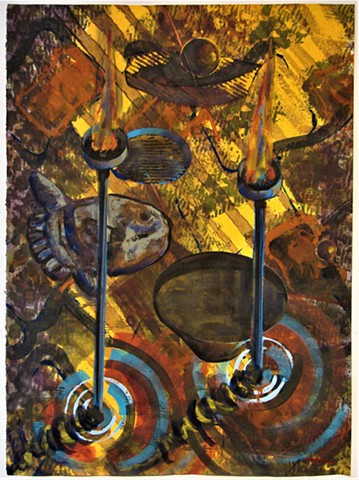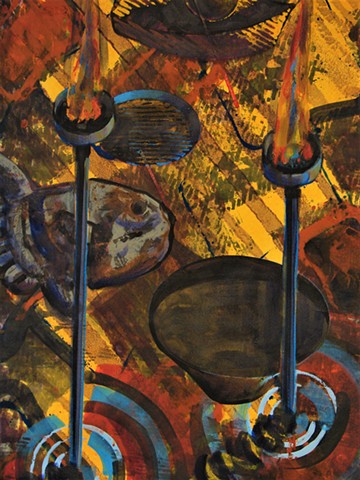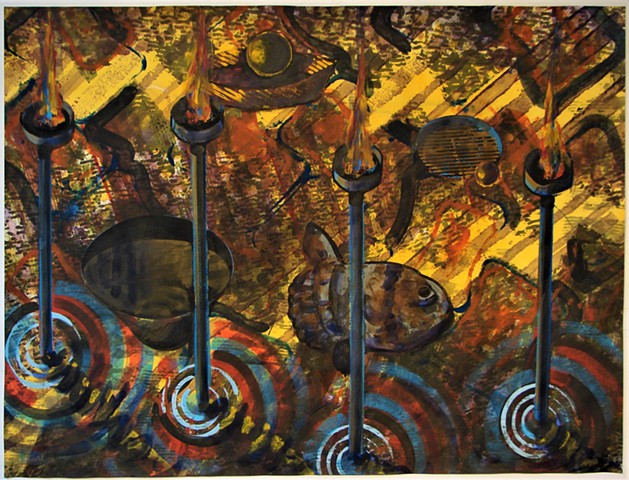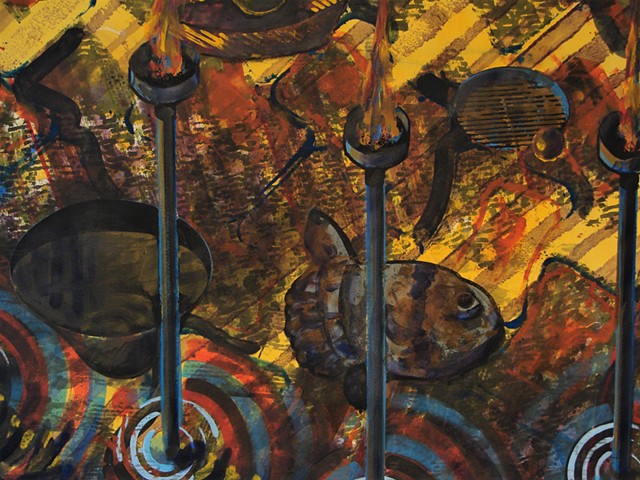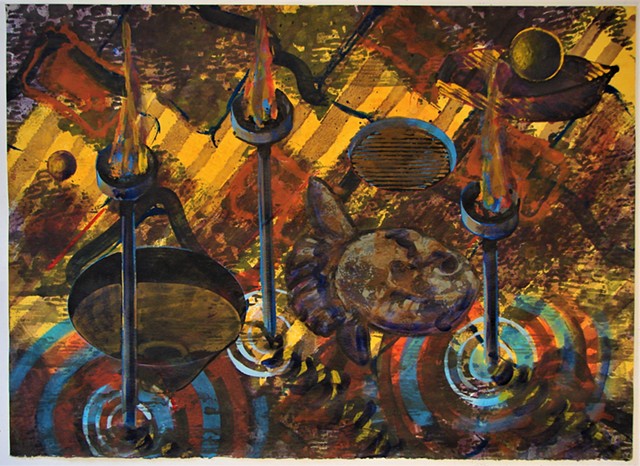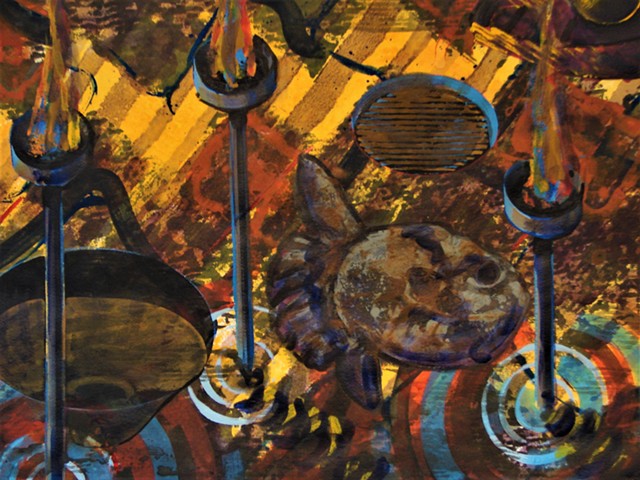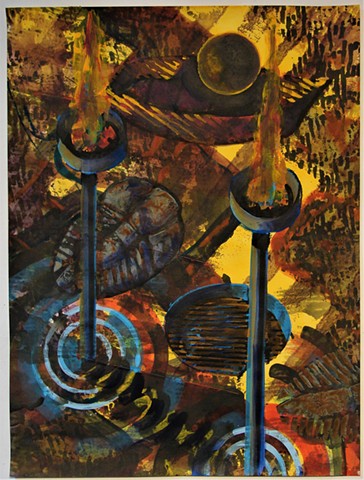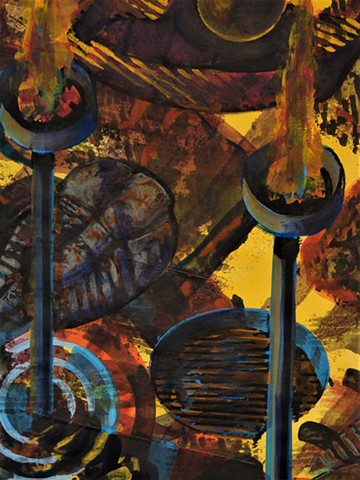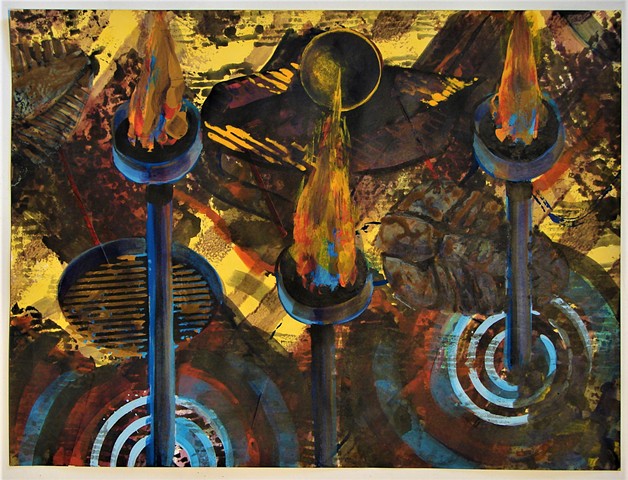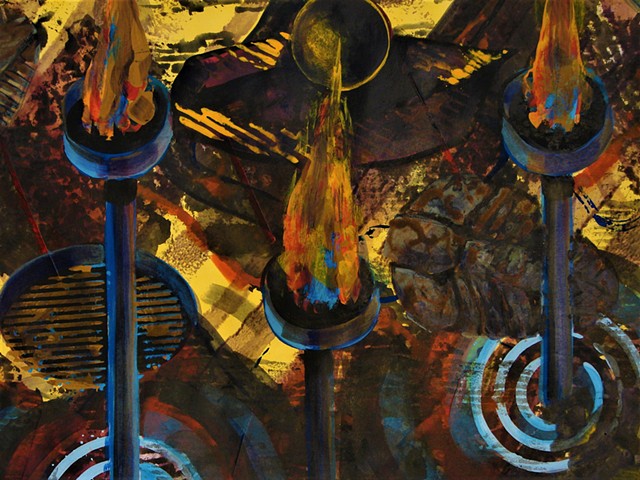First Light
Two States of Light – Objects in Illuminated Spaces
I
On winter mornings it is so dark in the house that a lighted candle or the flames of the gas stove create a world of quiet by the quality of their illumination. Sitting with coffee in the dim light reminds me of the tobacco-colored genre still-life paintings of the early Baroque in the low land countries of the Netherlands.
There is a meditative resonance to this kind of light. The edges of most objects are softened and the forms themselves flattened slightly. Contrast isn’t a feature of what we might be able to see, and instead the space composes itself like fabric slowly unwinding towards the surfaces at the edges of our peripheral vision. Waves of light seem to be made to behave in slow-motion, as the space unfurls back and forth.
The only demands made of us are to study more carefully the room and its contents – familiar by day, but now only revealing itself with the efforts of our concentration. The space whispers back to us sitting quietly before it as the sun begins to rise.
II
The raking shadows that fall across buildings in broad daylight create patterns of diagonals across the grids of windows rising vertically at the same time as other details punctuate the facades with horizontal elements. Contrast in sunlight is emphatic and the resulting rhythms of cascading shapes give dramatic example of architecture as “frozen music.” The graphic score that Walter Pater so summarized is given to us daily in the full sunlight of a city day. Like the pace and purposes that drive an urban population, the intensity of sunlight and shadow during a given afternoon leap in front of us and ask that we dance to their sharp and jagged patterns.
In sunlight, space doesn’t ask for us to participate, but insists that we take our full and be gratefully stimulated. The challenge is to keep up, not to be overwhelmed by the contrast, tone, or volume of these fully lighted states.
III
During each day we might partake of these varied states of light. Like vision that is assumed when our eyes are open, the states of light are typically organized around the day on our rotating planet, in and out of darkness. At the extremes of this polarity, we are given the potential for rest and energy in parcels across the span of our lives. It has been said that we were gifted with Fire by Prometheus, for one. Our earliest habitation of caves may have inspired the creation of sheltering architecture. Living spaces in the landscape frequently glow at dawn waiting for the sunrise, as we prepare to emerge into daylight. These states of light have been with us for millennia, and make it possible for us to live and also to think back past our own lives into the same states of light that have, no doubt, always enveloped us in their rhythms.
